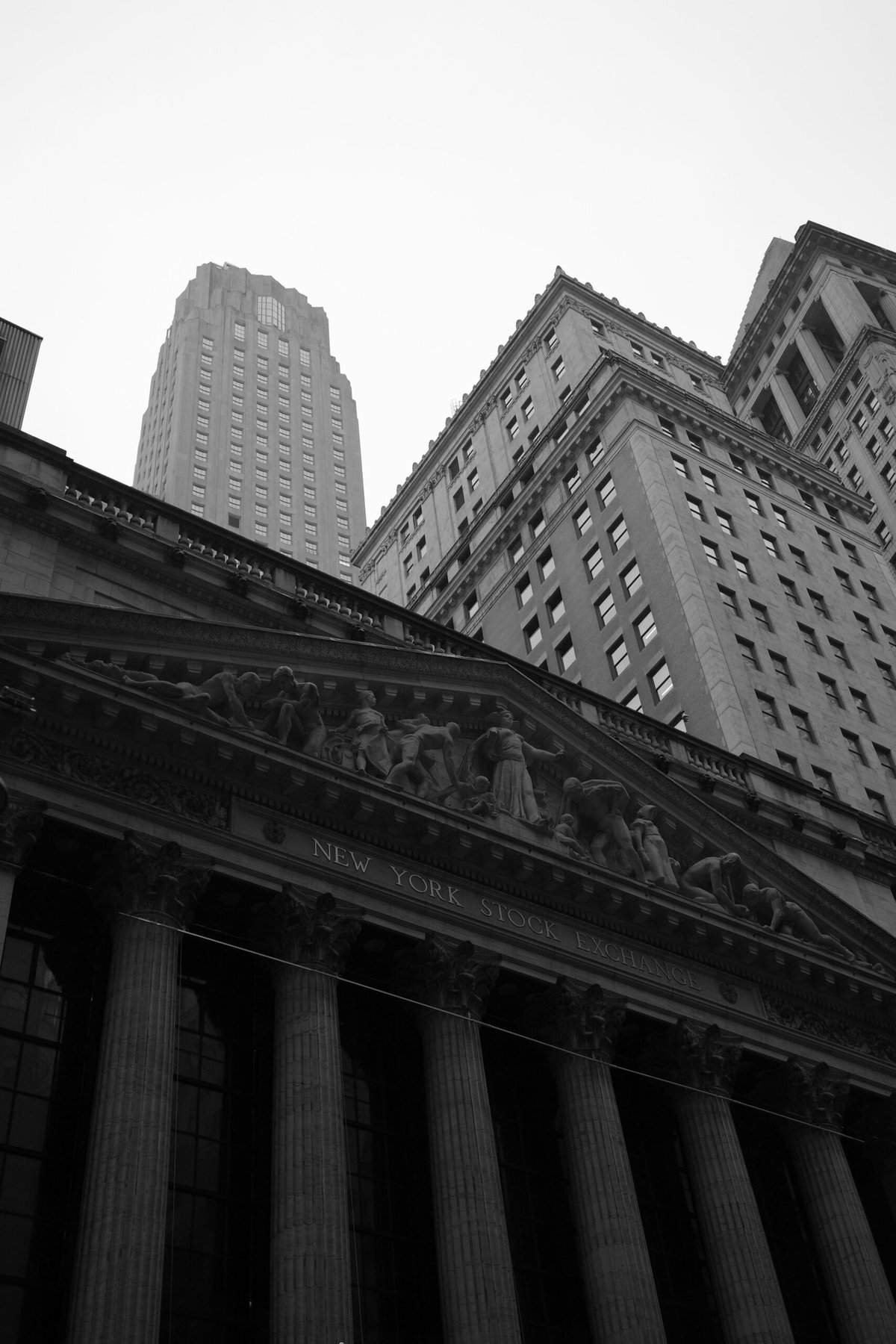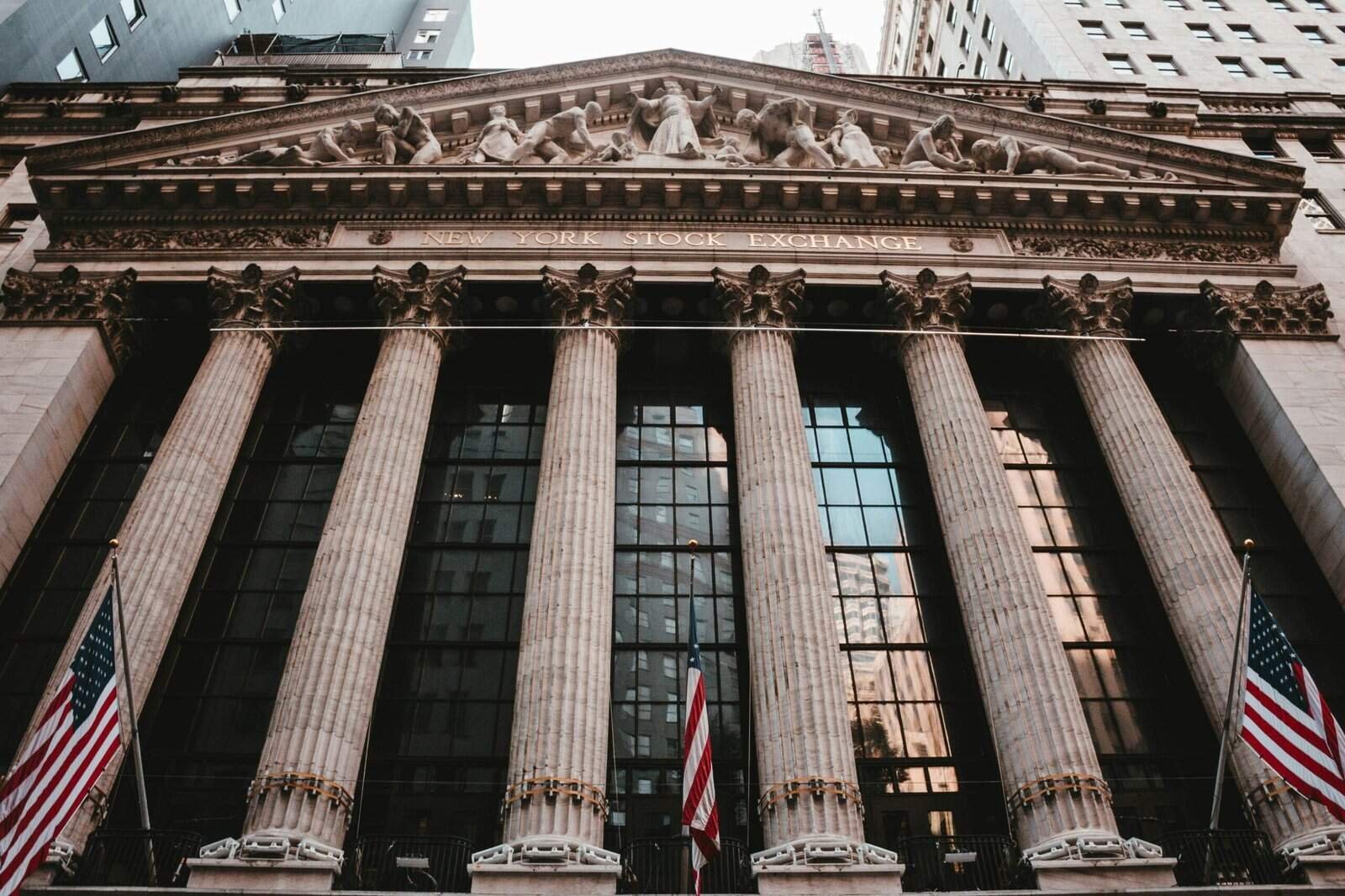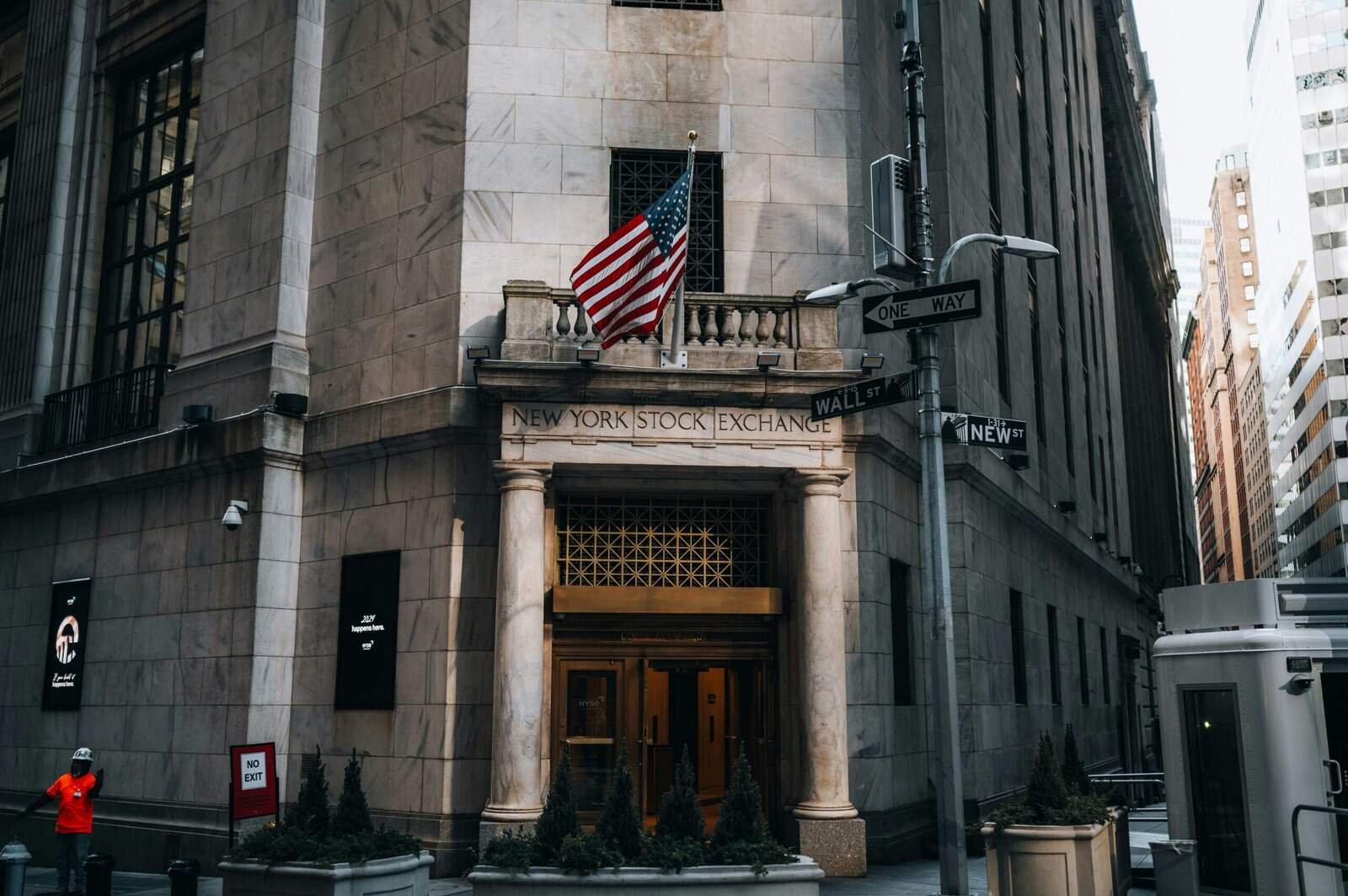Which exchanges do institutional investors trust the most, and why do those choices matter for your portfolio or firm?

Which Exchanges Are Most Trusted By Institutional Investors?
You’re likely trying to understand which exchanges institutional investors favor so you can make better decisions about execution, custody, access, and counterparty risk. This article breaks down the exchanges most trusted by institutions, the criteria they use, and practical steps you can take when selecting or evaluating an exchange partner.
Why Exchange Selection Matters to You
Choosing the right exchange affects trading costs, settlement risk, regulatory compliance, and long-term strategy. You want to reduce operational interruptions, access deep liquidity, and ensure your assets are secure and compliant. Institutions often treat exchange selection as a strategic decision rather than a purely transactional one.
What Institutional Investors Look For
Institutions evaluate exchanges on several consistent factors. These are the elements that will likely drive your own assessment and that determine whether an exchange becomes a trusted counterparty.
- Regulation and oversight: You’ll want exchanges regulated by credible authorities and compliant with applicable laws.
- Liquidity: Deep, diverse order books reduce market impact and slippage.
- Transparency: Clear rules, market data, and surveillance systems prevent manipulation and enhance price discovery.
- Clearing and settlement: Robust CCPs (central counterparties) and efficient settlement lower counterparty risk.
- Custody and asset safety: Institutional-grade custody services and segregated accounts protect assets.
- Technology and resilience: Low-latency systems, redundancy, and tested disaster recovery are crucial for your continuous operations.
- Market structure and fees: Competitive fees and fair market structure reduce trading costs and align incentives.
- Access: Connectivity options, APIs, and membership models should suit your operational setup.
- Product range: Access to equities, fixed income, derivatives, ETFs, FX, commodities, and alternative assets affects your strategy.
- Reputation and track record: History of reliable operations, transparency in incidents, and consistent regulatory compliance guide trust.
How Institutions Use These Criteria
Institutions perform rigorous due diligence, typically via RFPs and operational reviews. You’ll find they run legal, compliance, and technical assessments, often including:
- On-site inspections or virtual audits
- Service-level and legal agreement reviews
- Technology integration testing
- Stress tests and disaster recovery validation
- Counterparty credit and operational risk analysis

Major Traditional Exchanges Trusted by Institutional Investors
Below is a list of major traditional stock and derivatives exchanges institutions commonly trust. Each entry explains why institutions favor them and what you should consider when interacting with them.
New York Stock Exchange (NYSE)
The NYSE is a core market for many global institutions because of its deep liquidity, stringent listing standards, and long history. If you trade large-cap U.S. equities, the NYSE often offers best execution opportunities, especially for block trades.
Considerations for you:
- Strong regulatory environment and rule enforcement
- Extensive market-making and block trading mechanisms
- Integration with major clearing houses like DTC and OCC
Nasdaq
Nasdaq is favored for technology and growth-oriented listings and for electronic, high-speed trading. Institutions value its sophisticated matching engine and extensive market data services.
Considerations for you:
- Rapid order matching and connectivity options
- Robust market data products, important for algo trading
- High concentration of tech stocks—useful if your strategy targets that sector
London Stock Exchange (LSE)
LSE is a gateway to European markets and offers a mix of primary listings and cross-border liquidity. Institutions appreciate its regulatory environment and status as a financial center.
Considerations for you:
- Good for international diversification and European exposure
- Strong post-trade infrastructure (CREST)
- Access to European primary offerings and secondary liquidity
Deutsche Börse (Xetra)
Xetra and Deutsche Börse are central for euro-area trading. Institutions value transparent pricing, strong surveillance, and efficient clearing via Clearstream.
Considerations for you:
- High transparency and liquidity in European blue chips
- Strong derivatives market via Eurex
- Efficient cross-border settlement services
Euronext
Euronext combines several European markets into a single platform, which institutions use for pan-European strategies and centralized access across multiple jurisdictions.
Considerations for you:
- Consolidated access to major European markets
- Common rules and harmonized technology
- Good for regional ETFs and cross-listed securities
Hong Kong Exchanges and Clearing (HKEX)
HKEX is the primary route for institutional access to Greater China, including international issuers seeking Asian liquidity. Institutions rely on it for access to H-shares and IPOs.
Considerations for you:
- Key gateway to China-focused listings
- Increasing cross-border connectivity with mainland exchanges
- Important for exposure to Asian capital flows
Shanghai and Shenzhen Stock Exchanges (SSE and SZSE)
Mainland Chinese exchanges are crucial for domestic A-share exposure. Many institutional investors access them via Stock Connect programs or QFII/RQFII quotas.
Considerations for you:
- A-shares are increasingly accessible but still subject to onshore regulation
- Liquidity varies by sector and class of shares
- Settlement and custody rules differ from offshore markets
Tokyo Stock Exchange (TSE)
TSE serves as the core exchange for Japan, offering deep liquidity in Japanese equities and robust derivatives markets. Institutions often prefer TSE for yen-denominated strategies.
Considerations for you:
- Good for long-term exposure to Japanese corporates
- Strong regulatory framework and corporate governance reforms
- Integrated derivatives and cash market services
SIX Swiss Exchange
SIX is trusted for Swiss blue chips and wealth-management-friendly governance. Institutions value Switzerland’s legal structure and efficient settlement systems.
Considerations for you:
- Strong reputation for confidentiality and stability
- Efficient cross-border settlement via SIX SIS
- Narrowly focused market with high-quality issuers
Singapore Exchange (SGX)
SGX is a hub for Southeast Asia and a global center for derivatives trading, especially in commodities and Asia-focused ETFs. Institutions use SGX for regional strategies and as a derivatives venue.
Considerations for you:
- Access to Asian derivatives and ETFs
- Political and regulatory stability
- Integration with global clearing and custody networks
CME Group and ICE (Derivatives and Commodities)
If your strategy includes futures, options, commodities, or interest-rate products, CME and ICE are primary venues. Institutions rely on their central clearing and risk-management frameworks.
Considerations for you:
- Deep liquidity across asset classes
- Robust central counterparties and risk controls
- Important for hedging and macro strategies
How Exchanges Compare — Quick Reference Table
The table below summarizes the key strengths and common uses of these exchanges for institutional investors.
| Exchange | Strengths | Best used for |
|---|---|---|
| NYSE | Deep liquidity, strong governance | Large-cap U.S. equities, block trades |
| Nasdaq | High-speed electronic trading, tech concentration | Tech and growth stocks, algo trading |
| LSE | International listings, European access | Cross-border equities, IPOs |
| Deutsche Börse (Xetra/Eurex) | Transparent euro pricing, derivatives | European equities, derivatives |
| Euronext | Pan-European access | Regional strategies, ETFs |
| HKEX | China access, IPOs | Greater China exposure, H-shares |
| SSE / SZSE | Large domestic market | China A-shares (via connect/quota) |
| TSE | Large corporate market, yen exposure | Japanese equities, corporate bonds |
| SIX | Stability, high-quality issuers | Swiss equities, wealth management |
| SGX | Derivatives, Asian linkages | Asian derivatives, ETFs |
| CME / ICE | Derivatives & clearing | Futures, options, commodities, rate hedging |

Cryptocurrency Exchanges: What Institutions Trust
As digital assets become part of institutional portfolios, reputable crypto exchanges and custodians have emerged. Institutions judge crypto venues on custody security, regulatory compliance, counterparty risk, and transparency.
Leading Crypto Venues and Custodians
- Coinbase (Coinbase Prime + Coinbase Custody): Known for strong compliance and institutional custody solutions.
- Binance (Institutional services): Offers deep liquidity but regulatory concerns in some jurisdictions require careful vetting.
- Kraken (Kraken Pro + Kraken Custody): Emphasizes security and compliance in several jurisdictions.
- Bitstamp: Long-standing European exchange with institutional service offerings.
- Gemini: Promoted as regulated and compliance-first with insured custody options.
- Fidelity Digital Assets / BNY Mellon / State Street (custody and services): Institutional banks offering custody and trading infrastructure for institutions.
Considerations for you:
- Custody: Prefer segregated, insured custody with strong private key management.
- Auditability: Proof-of-reserves, audited financials, and transparent processes increase trust.
- Regulation: Licenses across major jurisdictions reduce legal risk.
- Insurance: Limited coverage exists; you should evaluate policy depth and exclusions.
- Counterparty risk: Where possible, prefer custody separations and third-party audits.
Clearing, Settlement, and Custody: The Backbone of Trust
Institutions heavily weigh post-trade mechanics. The safety and reliability of CCPs, custodians, and settlement systems directly affect your counterparty exposures.
Central Clearing Counterparties (CCPs)
CCPs reduce bilateral counterparty risk by interposing themselves between trading parties. Institutions prefer exchanges attached to robust CCPs with:
- High-quality margining systems
- Deep resources to manage defaults
- Transparent stress testing and recovery plans
If you trade derivatives or certain OTC products, the choice of CCP matters for margin and netting efficiency.
Custodians and Asset Safety
Institutional custody can be provided by:
- Exchange-affiliated custody (e.g., Coinbase Custody)
- Third-party custodians (e.g., BNY, State Street)
- Bank custodian arrangements for traditional assets
Assess custodians on segregation of assets, security protocols, legal title, insurance, and their recovery processes in case of insolvency.
Settlement Efficiency
Settlement cycles (T+1, T+2) and cross-border settlement mechanics affect funding needs and counterparty exposure. You’ll want an exchange with predictable settlement windows, efficient fail procedures, and clear haircut rules for collateral.

Regulatory and Compliance Considerations
You must consider the regulatory environment of the exchange. Institutions generally prefer:
- Exchanges regulated by major authorities (SEC, FCA, ESMA, HKMA, MAS, BaFin, etc.)
- Clear market abuse and disclosure rules
- Strong oversight of market data, insider trading, and surveillance
- Predictable rule changes and public consultation processes
Regulatory risk can affect access, permissible strategies, and custody arrangements. When investing across jurisdictions, you’ll need legal and tax advice to manage local rules.
Market Structure and Fair Access
Market fragmentation and dark pools can affect price discovery and execution quality. Institutions look for:
- Access to lit and dark liquidity when appropriate
- Order types that match execution strategies
- Fair and transparent fee schedules
- Exchange policies on market makers and incentive programs
Your execution desk should evaluate venue-specific microstructure to determine where your orders will face minimal adverse selection and slippage.

Operational Resilience and Business Continuity
You shouldn’t underestimate operational readiness. Institutional trust is heavily influenced by a venue’s history of outages, communication during incidents, and recovery processes.
Key operational attributes you should validate:
- Redundancy across data centers and networks
- Defined incident response and public communications
- Tested contingency trading protocols
- SLAs for connectivity and market data
Ask for incident post-mortems and RTO/RPO metrics during your due diligence.
Quantitative Approaches to Ranking Exchanges
If you need a data-driven assessment, you can create a scoring model. Below is a sample weighting template you can adapt.
| Factor | Weight (%) | Why it matters |
|---|---|---|
| Regulation & Legal Certainty | 20 | Defines legal protections and oversight |
| Liquidity | 18 | Affects execution costs and market impact |
| Clearing & Settlement | 14 | Reduces counterparty and settlement risk |
| Custody & Asset Safety | 12 | Protects assets from theft or insolvency |
| Technology & Resilience | 10 | Ensures operational continuity |
| Transparency & Market Surveillance | 8 | Prevents manipulation, improves pricing |
| Product Range & Innovation | 7 | Enables broad strategies |
| Fees & Market Structure | 6 | Affects trading cost efficiency |
| Reputation & Track Record | 5 | Reflects historical reliability |
| Total | 100 |
You can score each exchange 1–10 against these factors and compute weighted totals. This gives you a defensible, repeatable selection framework.
Practical Checklist for Evaluating an Exchange
Use this checklist to guide your assessments. You’ll find many of these items are commonly requested by institutional compliance, operations, and legal teams.
- Regulatory licenses and supervisory contacts
- Audit reports and financial statements
- Proof of segregation and custody arrangements
- Insurance documentation and scope
- Clearing membership and margin methodology
- Settlement cycles and fail-handling policy
- Market data products and pricing
- Connectivity options (FIX, API, co-location)
- Historical uptime and outage post-mortems
- Security certifications (SOC2, ISO27001)
- Operational playbooks and disaster recovery plans
- Fee schedule and rebate programs
- KYC/AML processes and counterparty onboarding
- Governance structure and corporate controls
Special Considerations by Asset Class
Different asset classes make certain exchanges more relevant.
Equities
For equities, you’ll look at venue liquidity, concentration of market makers, and access to dark and lit pools. The NYSE and Nasdaq dominate the U.S., while LSE, Deutsche Börse, and Euronext are important in Europe, and HKEX and TSE are vital in Asia.
Fixed Income
Bond trading is more fragmented; many institutions use primary dealers, ATSs, or electronic platforms like Tradeweb and MarketAxess. Clearing and settlement differences can be substantial, especially for sovereign vs. corporate bonds.
Derivatives
For futures and options, CME, ICE, Eurex, and SGX are the primary venues. Margining, portability, and CCP choice are vital.
FX and Commodities
FX is largely OTC, but derivatives and futures trade on exchanges like CME, ICE, and LME. You’ll focus on liquidity and settlement mechanisms in these venues.
Crypto
As noted, custody and regulatory clarity dominate. Choose exchanges that separate custody from trading and provide audit trails and insurance where possible.
Examples of Institutional Use Cases
Here are real-world-style scenarios to show how institutions pick exchanges.
- Pension Fund Large-Cap Equity Allocation: You’ll likely route large block trades to NYSE and LSE, using dark liquidity or negotiated block trades to minimize market impact.
- Hedge Fund Algorithmic Trading: You’ll favor Nasdaq, Xetra, and venues with low-latency co-location options and rich market data.
- Sovereign Wealth China Allocation: You’ll access SSE/SZSE via Stock Connect or QFII routes, and use HKEX for offshore listings.
- Asset Manager Derivatives Hedging: You’ll use CME/Eurex for rate and commodity hedges because of deep liquidity and CCP protections.
- Endowment Crypto Allocation: You’ll opt for custody-first solutions (Coinbase Custody, Fidelity Digital Assets) and regulated venues for spot exposure.
Risks and Red Flags to Watch For
Even trusted exchanges encounter issues. Watch for these warning signs before you commit capital or operational integration.
- Ambiguous regulatory status or active enforcement actions
- Poor or opaque proof-of-reserves (crypto)
- Frequent, unexplained outages or communication failures
- Weak segregation of client assets or unclear custody rights
- Unclear clearing arrangements or sudden rule changes
- High turnover in senior leadership with no clear governance
- Excessive concentration of liquidity in a small set of market makers
If you spot these, escalate to your compliance and legal teams and consider contingencies.
How to Build Redundancy and Minimize Exchange Risk
You can’t eliminate exchange risk completely, but you can reduce it through planning.
- Multi-venue access: Don’t rely on a single exchange for execution or liquidity.
- Diverse custody providers: Use a mix of custodians and segregated accounts.
- Contingency trading protocols: Have automated failover routes for critical execution strategies.
- Contractual protections: Negotiate service-level agreements and indemnities where possible.
- Continuous monitoring: Use real-time surveillance tools and liquidity trackers.
These measures will make your operations more resilient and will enhance the trust you can place in your chosen venues.
Future Trends That Will Affect Exchange Trust
Several industry trends will shape the exchanges you trust going forward.
- Increased regulatory scrutiny: Regulators are tightening rules for market integrity and consumer protection across asset classes.
- Consolidation and partnerships: Exchanges are forming alliances to improve cross-border connectivity and centralize liquidity.
- Tokenization and blockchain: Asset tokenization could create new venues; custody and settlement innovations will be key trust drivers.
- ESG and governance focus: Exchanges with strong ESG disclosure and governance practices will attract institutional flows.
- Data and AI: Exchange-provided data and analytics will be increasingly important for execution and compliance.
Keeping an eye on these trends will help you assess long-term trustworthiness.
Actionable Recommendations for You
- Start with a scoring model tailored to your priorities (liquidity, custody, regulation) and score candidate exchanges.
- Run technical connectivity and settlement tests before committing live capital.
- Insist on third-party audits, incident histories, and SLAs in vendor contracts.
- Use multi-venue execution strategies to limit single-point exposure.
- For crypto, prioritize custody-first solutions and jurisdictions with clear regulations.
- Engage legal and compliance early to map out any jurisdictional restrictions or reporting requirements.
Conclusion
Choosing an exchange is a strategic, multi-dimensional decision that affects execution quality, operational risk, and regulatory compliance. You’ll generally find institutions trust large, well-regulated exchanges—NYSE, Nasdaq, LSE, Deutsche Börse, HKEX, and major derivatives venues like CME and ICE—because they combine deep liquidity, clear rules, strong clearing and custody, and proven operational resilience. For crypto, custodians and regulated institutional platforms are the most trusted options.
Use a structured, weighted assessment tailored to your priorities, validate operational readiness through testing, and build redundancy to manage unavoidable risks. With the right framework, you’ll be able to identify exchanges that align with your risk tolerance, investment goals, and operational capabilities.
